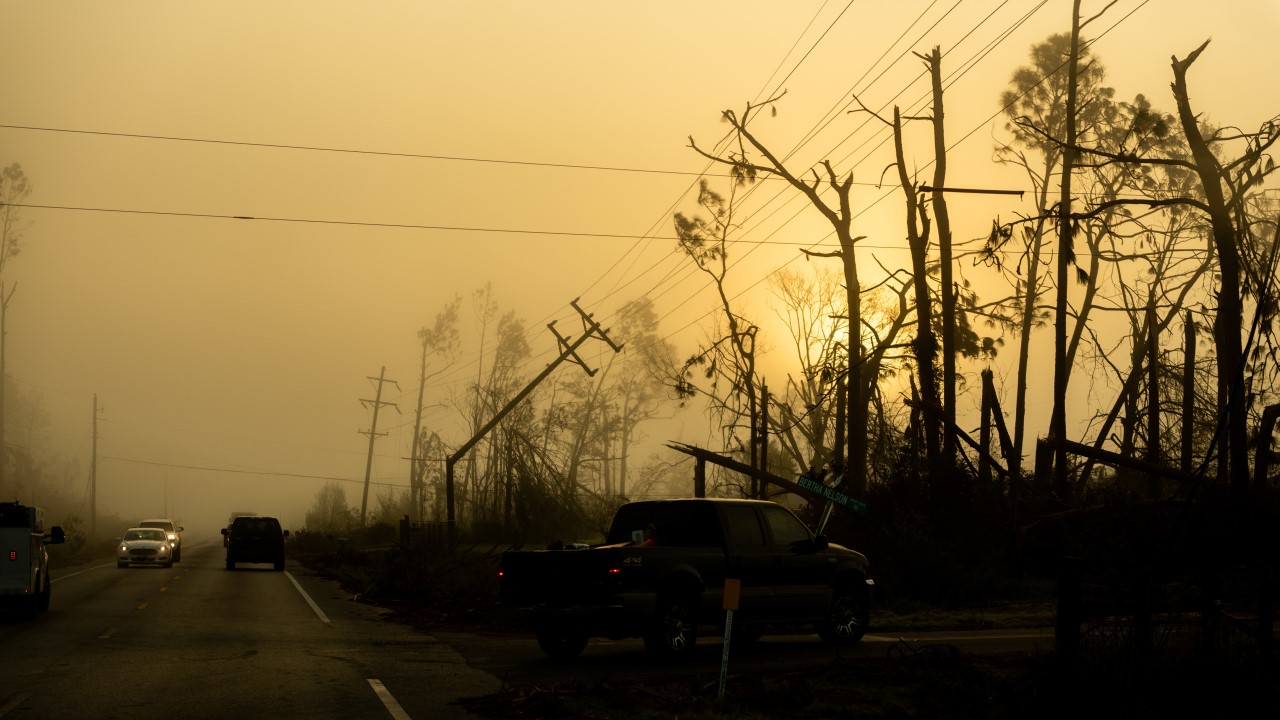
Imagine this scenario. City Manager Langford stared at the dark streetlights. The summer storm had been far more fierce than expected, perhaps the worst the area had ever seen. Langford assured the worried faces in the emergency operations center that power would be restored soon. But hours passed, and the city remained dark. Eventually, the electrical utility’s government affairs representative called with an update. The storm had wiped out the three main substations and flooded the backups. Helicopter inspections revealed that the nearest operable station was 50 miles away and near failure. There was no timeframe for system restoration.
Langford checked with the public works department, who reported that emergency generators were running, and critical infrastructure was operable. To be on the safe side, Langford had the numbers crunched. The backup power supply would last a little over 72 hours before they were out of fuel. That was reassuring since they had never been that long without power. At dawn, the government affairs representative called again with an update. Langford stood in shock with the phone at her ear. Stunned, she turned to her team: “We need to prepare for at least two weeks without power.” The weight of her own words began sinking in. They were plunged back into a pre-electric age, and it was her job to navigate them through it.
We all hope to never be in the situation of City Manager Langford. However, communities across the nation find themselves increasingly facing prolonged power outages as a reality. Whether from aging distribution infrastructure, natural disasters, or criminal threats, the nation’s electricity infrastructure is a growing threat to the maintenance of public order and public safety that must be given due attention.
Increasing and Complex Threat Environment
According to the Department of Energy (DOE), the vast majority of the nation’s electrical grid was built in the 1960’s and 1970’s. Seventy percent of transmission lines that distribute power across regions is more than 25 years old, with the majority of that approaching an end-of-lifecycle age of 50-plus years. While investments are being made to modernize systems through automation, interconnection monitoring technologies, and distributed generation management, faulty grid infrastructure presents an increasing risk to resiliency.
Power demand is also seeing increasing growth rates. According to Raymond James Equity Research’s Energy Group, U.S. electricity demand was mostly flat over the past quarter century. Increasing energy efficiency largely offset population and industry growth. But two demand drivers are projected to accelerate consumption: electric vehicles and artificial intelligence. These technologies are expected to grow electricity demand from increasing around 0.4% per year to 2.8% per year through 2030.
Recognizing the challenge, the Bipartisan Infrastructure Bill provides $10.5 billion through the DOE for increasing grid resilience across the nation, the largest investment in U.S. history. While the investment is expected to increase transmission capacity to allow for more renewable energy production, it may fall short of the needed investment in resiliency. One estimate by Rhodium Group—in partnership with Princeton University, the Massachusetts Institute of Technology, and the nonprofit Energy Innovation—shows a need to increase renewable energy production by 46 to 79 gigawatts per year to meet greenhouse gas emission reduction targets to hedge against climate change. However, transmission and red tape are slowing renewable projects.
Without accelerating the pace to reduce greenhouse gas emissions and meet increasing electricity demand, climate change will continue to present more challenges to community resiliency. Half of California’s most destructive wildfires in the past decade were caused by electrical infrastructure. This caused the California Public Utilities Commission in 2019 to set rules that allow electric utilities to shut off power if weather conditions presented an elevated risk of wildfire. Known as public safety power shutoffs, the rules have affected millions of Californians when weather is most dangerous: hot and windy.
Earlier this year, Texas saw an adjacent challenge with Hurricane Beryl. While City Manager Langford’s story is fiction, it’s not far from the realities faced by city leaders in the Houston area. Hundreds of thousands of residents were without power for more than a week. Those outages, tragically, attributed to the deaths of at least 10 people from heat exposure due to electricity loss.
Then there are the increasing risks caused by an ever-more-connected world. As we expand internet-connected software systems to manage our energy systems, we expose ourselves more to cyberattack risks. The U.S. director of national intelligence has been explicit in stating the cyber vulnerabilities to grid distribution. “Threat actors are becoming increasingly capable of carrying out attacks on the grid.” Whether attacks are from state actors such as China or Russia, or from non-state actors such as organized cybercriminals, the risks are growing by the day.
Rising to the Challenge
The vast responsibility that managers have in delivering services to our communities, compounded by limited resources, often consumes us with a task-oriented focus. The need to review budgets, respond to quality-of-life emails (read: potholes), tend to personnel matters, and prioritize our elected officials can limit our focus on emerging threats. In my conversations with colleagues, I rarely find that time is being spent thinking about building resiliency of electrical infrastructure or preparing for a prolonged power outage. I see a three-pronged approach for preparing our communities for these threats.
First, managers and their teams must develop a better understanding of the local electricity supply and distribution networks in their communities and regions. Only 24 million Americans live in communities with public-owned utilities. My guess is that leaders in communities with their own electrical utilities are ahead of the curve in understanding their systems. But that leaves more than 70% of U.S. electricity customers who receive their power from investor-owned utilities. This dynamic makes it easy to ignore electricity infrastructure in our communities as it’s the utility’s responsibility. Until recently, I was guilty of this mindset myself.
To improve knowledge of systems within your community, closer collaboration with electrical utility service providers is critical. Pacific Gas & Electric in Northern California, the nation’s largest utility company, has made strides in increasing access to distribution resources and integration capacity maps. The GIS-based mapping shows where transmission and distribution lines run across the system, details voltage feeds, and identifies capacity availability for new demand. The mapping also provides analysis for lines served by renewable energy sources, an important factor in identifying opportunities for microgrids that can improve local community electricity resiliency. By understanding local electricity infrastructure, managers can develop a better understanding of where risks exist within their community, and plan for maintaining essential services in a prolonged outage.
This leads to the second and most KISS (keep it simple, stupid) prong of the approach; prepare for a prolonged outage. Per FEMA guidelines and general best practices, most organizations have an emergency operations plan and conduct emergency operations trainings. Often led by our emergency first responders, tabletop training is a well-formed strategy to identify ways your organization may respond to varying emergencies. While training often focuses on the most common threats faced by a community, like wildfire and earthquakes here in California, a tabletop can easily be developed to respond to a prolonged power outage. As an example, a prompt can be that a cyberattack has taken out the electric grid in your community and power is expected to be out for more than a week. How do you respond?
These trainings often raise more questions than they answer in the moment. And that’s okay. By creating the environment for your teams to focus on the problem, the questions identified will daylight areas where planning is needed. Questions should range from the big picture, like how long you can last on backup power, to the more administratively mundane, such as how you process payroll by paper in the digital age. By developing an understanding of the challenges that your community is likely to face, you can then allocate resources to prepare.
Recommendations
1. Explore microgrids that combine renewable generation with backup storage sufficient to power critical operations centers such as emergency response, hospitals, water/wastewater treatment, and grocery stores.
2. Build relationships with your utility provider to ensure that you have access to information through channels that don’t rely on electricity. This can also lead to conversations about their plans to serve critical users.
3. Identify how your operations will shift to a paper-based system. As a millennial manager myself, that’s a daunting task having professionally grown up fully reliant on computer systems. For example, how will monitoring water systems happen without SCADA (the supervisory control and data systems for managing water/wastewater systems)?
4. Acknowledge the limitations of your response resources. For example, small communities may not have access to fuel supplies sufficient to operate emergency generators for more than a couple days. Knowing what’s most important to power can help you conserve resources longer.
5. Communicate with your community in advance. Articulating the limitations of your abilities to serve the community can set clear expectations for residents during an outage.
The final prong of my recommended approach is advocacy with our state and federal lawmakers. The President’s National Infrastructure Advisory Council identifies significant public and private action as necessary to prepare for catastrophic outages. ICMA, state associations, and the National and state Leagues of Cities must prioritize raising awareness to the dangers we face.
While we can prepare for our community to be without power, the larger the outage across a region the more state and federal resources will be strained in coordinating a response. By collectively advocating, we can highlight the need for further investments in infrastructure resiliency, response planning, and public awareness of the rapidly evolving threat we face.

DAVID GASSAWAY is city manager of Fairfield, California, USA.
Sources:
- U.S. Department of Energy, What does it take to modernize the U.S. electric grid?
- Pavel Molchanov, Raymond James, When It Comes to U.S. Electricity Demand, Chatbots Matter More Than Cars.
- UtilityDive.com, DOE announces ‘largest-ever investment in America’s grid,’ giving $3.5B across 44 states.
- California Public Utilities Commission, Public Safety Power Shutoffs.
- Nichola Groom, Reuters, Record US renewable energy investment not enough to meet climate goals - report.
- Adam Zuvanich, Houston Public Media, Hurricane Beryl caused at least 20 Houston-area deaths, with half power outage-related.
- Chuck Brooks, Forbes, 3 Alarming Threats to the U.S. Energy Grid – Cyber, Physical, and Existential Events.
- U.S. Energy Information Administration, Investor-owned utilities served 72% of U.S. electricity customers in 2017.
- PG&E Integration Capacity Analysis (ICA) Map, previously accessed at https://www.pge.com/b2b/distribution-resource-planning/integration-capacity-map.shtml.
New, Reduced Membership Dues
A new, reduced dues rate is available for CAOs/ACAOs, along with additional discounts for those in smaller communities, has been implemented. Learn more and be sure to join or renew today!
